
Good Housekeeping
LOW CARB!
90 EASY & SATISFYING RECIPES
HEARST BOOKS
New York

Good Housekeeping is a registered trademark of Hearst Communications, Inc.
Hearst Books is a trademark owned by Hearst Communications, Inc.
2013 by Hearst Communications, Inc.
Portions of this book were previously published under the title Good Housekeeping Smart CarbSuppers: Delicious and Healthy Meals.
All rights reserved. No part of this publication may be reproduced, stored in a retrieval system, or transmitted, in any form or by any means, electronic, mechanical, photocopying, recording, or otherwise, without prior written permission from the publisher.
ISBN 978-1-61837-090-7
GOOD HOUSEKEEPING
Rosemary Ellis
EDITOR IN CHIEF
Courtney Murphy
CREATIVE DIRECTOR
Susan Westmoreland
FOOD DIRECTOR
Samantha B. Cassetty, M.S., R.D.
NUTRITION DIRECTOR
Sharon Franke
KITCHEN APPLIANCES & FOOD TECHNOLOGY DIRECTOR
BOOK DESIGN: Memo Productions
PROJECT EDITOR: Sarah Scheffel

The Good Housekeeping Cookbook Seal guarantees that the recipes in this cookbook meet the strict standards of the Good Housekeeping Research Institute. The Institute has been a source of reliable information and a consumer advocate since 1900, and established its seal of approval in 1909. Every recipe has been triple-tested for ease, reliability, and great taste.
For information about custom editions, special sales, and premium and corporate purchases, please contact Sterling Special Sales at 800-805-5489 or specialsales@sterlingpublishing.com.
2 4 6 8 10 9 7 5 3 1
www.sterlingpublishing.com

We often hear from readers like you who are looking for smart ways to cut back on carbs. Whether youre controlling your carb intake to lose weight or to manage diabetes or another health issue, consider Good Housekeeping Low Carb! your ally. Weve rounded up 90 great main dishes that are big on flavor and easy to execute yet contain just 20 grams of carbs (or less) per serving. Sprinkled throughout are quick and tasty ideas for side dishes to round out your meals.
If youre already following a low-carb diet, youre probably familiar with basic meal-planning guidelines. But for the newbies (and as a refresher course for everyone), we review the basic nutrients you need for optimum health, offer tried-and-true tips for low-carb success, and invite you to make friends with your slow cooker and nonstick skillet theyll make meal prep a breeze!
Easy to prepare and light on your wallet, chicken and turkey are mainstays of a low-carb diet: Try our stir-fries, kabobs, roasts, and even a healthy turkey meatloaf. For you red-meat lovers, weve included succulent steaks and chops, hearty stews like Beef Burgundy, and salad plates like Pork Medallions with Asparagus Salad to make sure you get your greens.
Fish and shellfish are low in fat and high in protein, so weve included light and luscious recipes for everything from Ginger-Shallot Cod on Watercress to Shrimp and Tomato Summer Salad. Make it a habit to eat seafood at least once a week. And dont forget the power of eggs and vegetables: These make terrific low-carb breakfasts, lunches, and dinners. Youll love egg-centric dishes like Shrimp Egg Salad with Spring Peas and meatless mains like Roasted Eggplant Parmesan.
As always, every recipe is triple-tested and paired with complete nutritional information. With Good Housekeeping Low Carb! in your kitchen, youll never have to sacrifice flavoror satisfaction!
SUSAN WESTMORELAND
Food Director, Good Housekeeping
Welcome to Good Housekeeping Low Carb! Whether youre eating low carb to lose weight, controlling carbs because youre diabetic, or limiting carbs for other health reasons, enjoy our selection of tasty main dishes, plus suggestions for sides to round out your meals. All were chosen to keep you happy and satisfied while adhering to our nutrition departments low-carb guidelines: No more than 20 grams of carbs per serving.
Following a low-carb diet doesnt mean eliminating carbs from your diet! The goal is to reduce your total carb intake, limiting your intake of unhealthy carbs like refined white flour products and avoiding added sugar in favor of regulated portions of healthy carbs (see , for suggestions).
Heres how it works: Eating a meal high in carbohydrates raises the blood sugar level, which in turn raises the insulin level. When your insulin level is high, carbs are the main source of energy in your body. The low-carb theory is that when your insulin levels are low, your body uses a mixture of stored carbohydrates and fat as energy, thus promoting weight loss. A healthy diet will provide carbohydrates for your brain, help your body use stored fat as energy, and keep the muscle protein intact.
If losing weight is the goal, in addition to restricting carbs, be sure to watch your overall calorie count: Many experts agree that keeping track of calories consumed versus calories expended is the key to controlling weight. To help you do this, weve tagged all low-calorie recipes in the book with the following icon:  . This indicates maindish meals, including a starch or fruit, that are 450 calories or less per serving, along with other main dishes that are 300 calories or less per serving. In addition, heart-healthy
. This indicates maindish meals, including a starch or fruit, that are 450 calories or less per serving, along with other main dishes that are 300 calories or less per serving. In addition, heart-healthy  , thirty-minutes-or-less
, thirty-minutes-or-less  , make-ahead
, make-ahead  , and slow-cooker icons
, and slow-cooker icons  will help you choose recipes that best suit your needs.
will help you choose recipes that best suit your needs.
To make this book a lifesaver for busy cooks as dinnertime approaches, weve organized the chapters by main ingredient: chicken and turkey, beef and veal, pork and lamb, and seafood, plus a chapter on veggies, eggs, and cheese that includes many meatless mains. Many of these recipes are meals on their own. For those that arent, weve provided quick and easy ideas for low-carb sides that we hope youll find as inspiring as our entres.
THE NUTRIENTS YOU NEED: THE BIG THREE
The U.S. Department of Agriculture (USDA) recommends that everyone eat a wide variety of foods to get the calories, nutrients, fiber, and vitamins they require for good health. Our bodies need three essential nutrients: carbohydrates, proteins, and fats.
Carbohydrates: The right kinds of carbohydrates are a key part of a well-balanced diet; they are the bodys major source of energy, including fuel for the brain. Good carbohydrates include fruits, vegetables, legumes, and whole grains. Carbohydrates can be made up of dietary fiber, starch, or sugar. Those who follow a diet rich in dietary fiber have been shown to have a reduced risk of coronary heart disease, among other benefits, and research indicates that whole-grain eaters are thinner than people who eat few whole-grain foods.
Next page

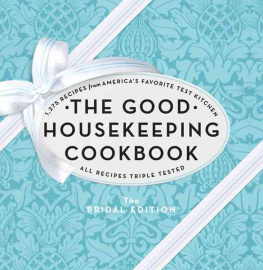
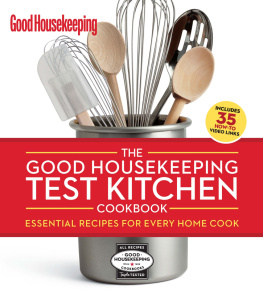


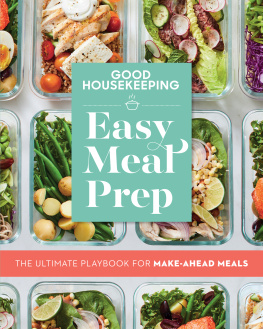

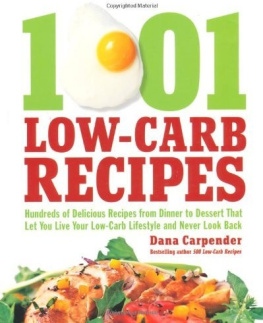

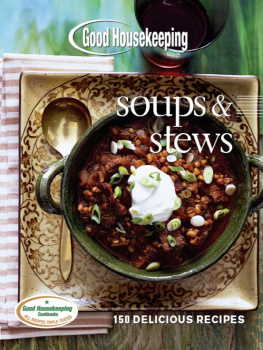



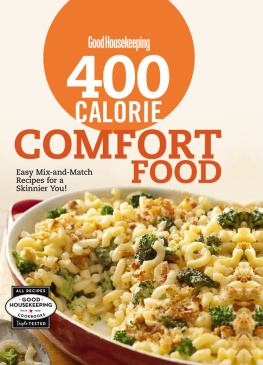




 . This indicates maindish meals, including a starch or fruit, that are 450 calories or less per serving, along with other main dishes that are 300 calories or less per serving. In addition, heart-healthy
. This indicates maindish meals, including a starch or fruit, that are 450 calories or less per serving, along with other main dishes that are 300 calories or less per serving. In addition, heart-healthy  , thirty-minutes-or-less
, thirty-minutes-or-less  , make-ahead
, make-ahead  , and slow-cooker icons
, and slow-cooker icons  will help you choose recipes that best suit your needs.
will help you choose recipes that best suit your needs.